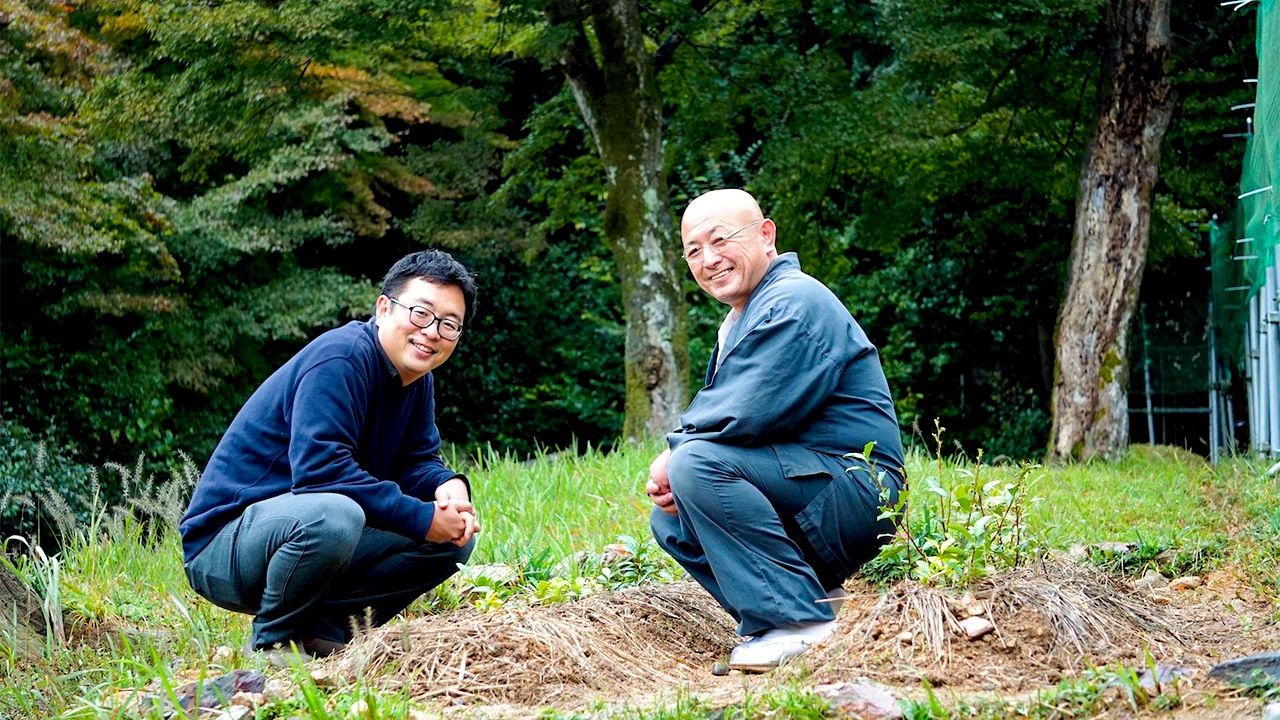
Japanese Agriculture for a New Era
Rebirth of a Legend: Reviving an 800-Year-Old Tea Farm
Culture History- English
- 日本語
- 简体字
- 繁體字
- Français
- Español
- العربية
- Русский
Chance Encounter with Traces of Shichimeien
A few years ago, Matsubayashi Toshiyuki of Uji’s only pottery kiln, Asahiyaki, was walking along the approach to the temple Kōshōji, located behind his workplace. It was then that he noticed an old tea bush.
He was personally interested in tea growing and had studied under Horiguchi Ichiko, a researcher into natural and Chinese tea, so he consulted her about his discovery. The two excitedly agreed that such an old bush should produce potent tea, so they asked at the temple for permission to try making tea from its leaves.
“The temple accepted our request. At the time, though, the thought of Uji’s seven fabled tea farms never even crossed my mind,” reflects Matsubayashi.
The history of Uji tea goes back to the Kamakura period (1185–1333), when legends say that the monk Eisai, who founded the Rinzai set of Buddhism in Japan, brought tea seeds back to Japan from China and gave some to the monk Myōe at the temple Kōzanji. Myōe planted the seeds at locations including Uji.
The area’s legacy as a tea producing center was cemented in the Muromachi period (1336–1573), when the shōgun Ashikaga Yoshimitsu (1358–1408) ordered the opening of seven tea farms in Uji. These became known as the Uji Shichi Meien—shichi as seven, mei being an ancient word for tea farm, and en a word for garden or field—and included Mori, Iwai, Umoji, Kawashimo, Okunoyama, Asahi, and Biwa. Today, only Okunoyama remains active.
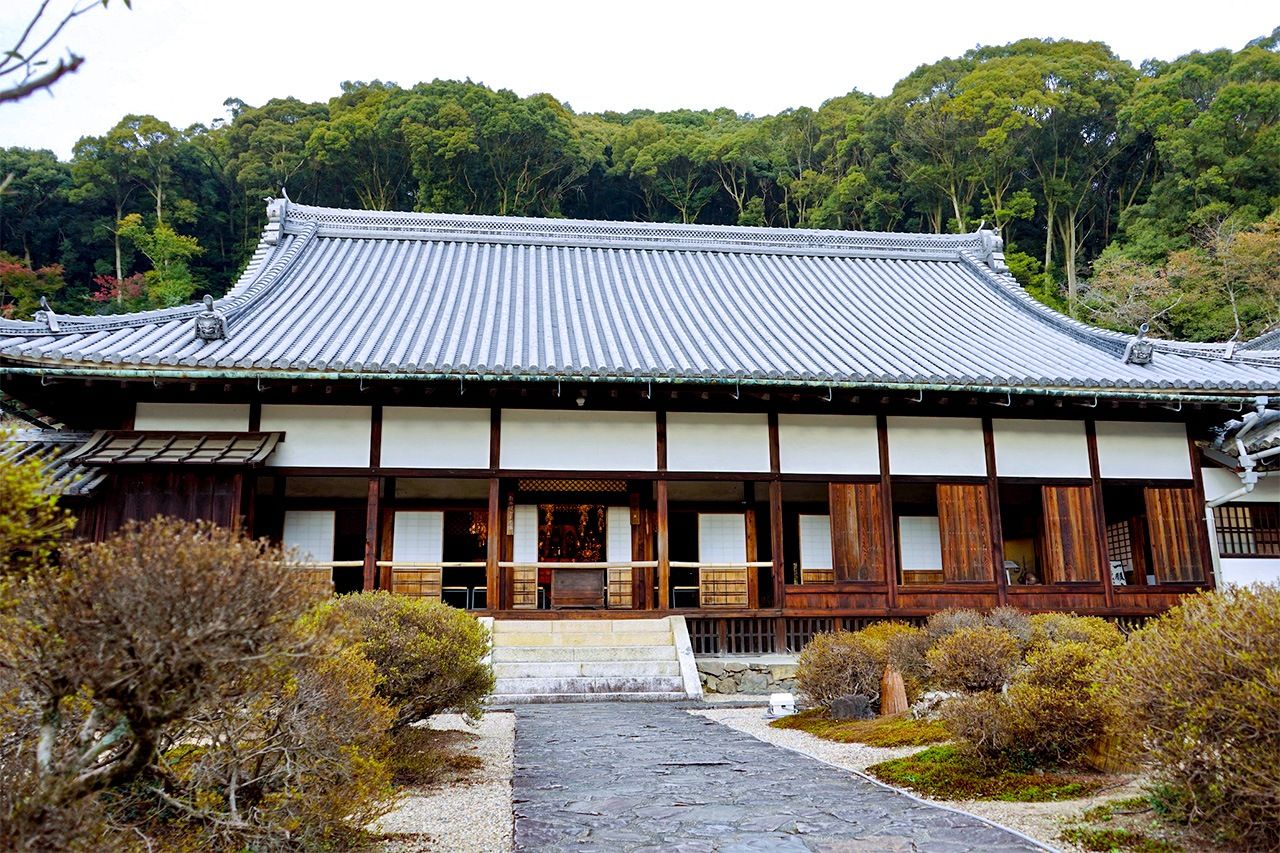
The temple’s Hattō hall seen through the gate. (© Ukita Yasuyuki)
The Kōshōji monk Isozaki Endai recalls being approached by Matubayashi about the plant. “I came to Kōshōji eleven years ago, but it seems no one really understood that there were still tea bushes here,” says Isozaki.
Part of Asahien
Kōshōji was originally opened in 1233 by Dōgen, the monk who founded the Sōtō school of Zen, as a place to train monks in what is now the Fukakusa neighborhood of Fushimi, Kyoto Prefecture. However, Dōgen soon left for Fukui Prefecture, and the temple he left behind declined and closed around a decade after its opening. Then, in 1645, Nagai Naomasa—lord of Yodo castle and a devout follower of Sōtō—had the temple rebuilt on a tea farm on the slopes of Mout Uji, where it still stands today. It is famous now as the temple sanctifying a statue of Shakyamuni Buddha made by Dōgen, and the area is popular with tourists coming to view autumn leaves along the Kotosaka temple road and to join in the Ujicha Matsuri tea festival held each October.
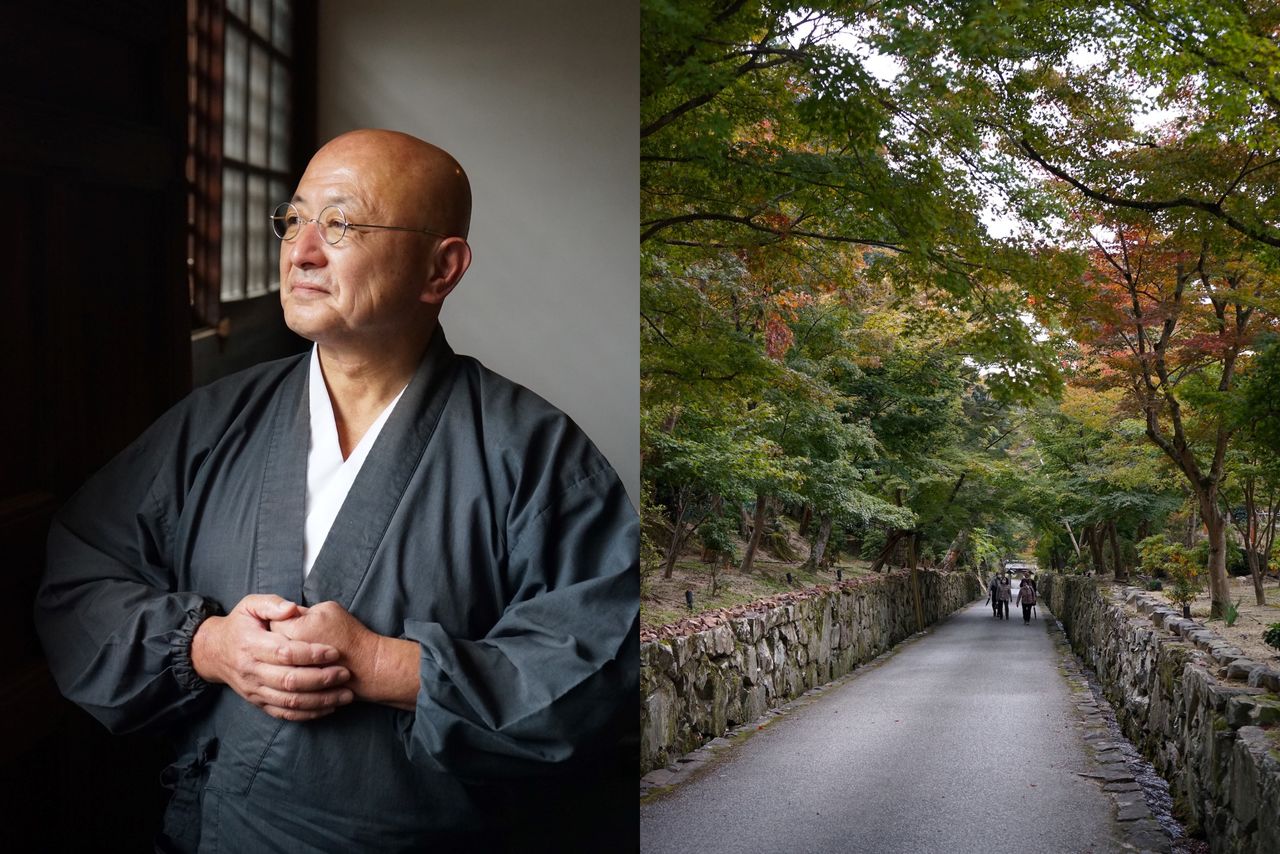
Isozaki and the Kotosaka road to Kōshōji, known for its autumn leaves. (© Ukita Yasuyuki)
Having said it rests “on the slopes of Mout Uji,” though, the section behind the temple is commonly known as Mout Asahi. That makes it reasonable to speculate that Kōshōji and its surroundings might actually be on the former site of Asahien, one of the lost Shichi Meien fields.
Tea’s spread has historically centered around Zen temples, and the two are intimately linked. According to Isozaki, there were seven tea houses on the temple grounds at the time of its rebuilding. It is not difficult to understand why Lord Nagai, who himself was a tea ceremony devotee, chose a tea farm for the temple’s restoration.
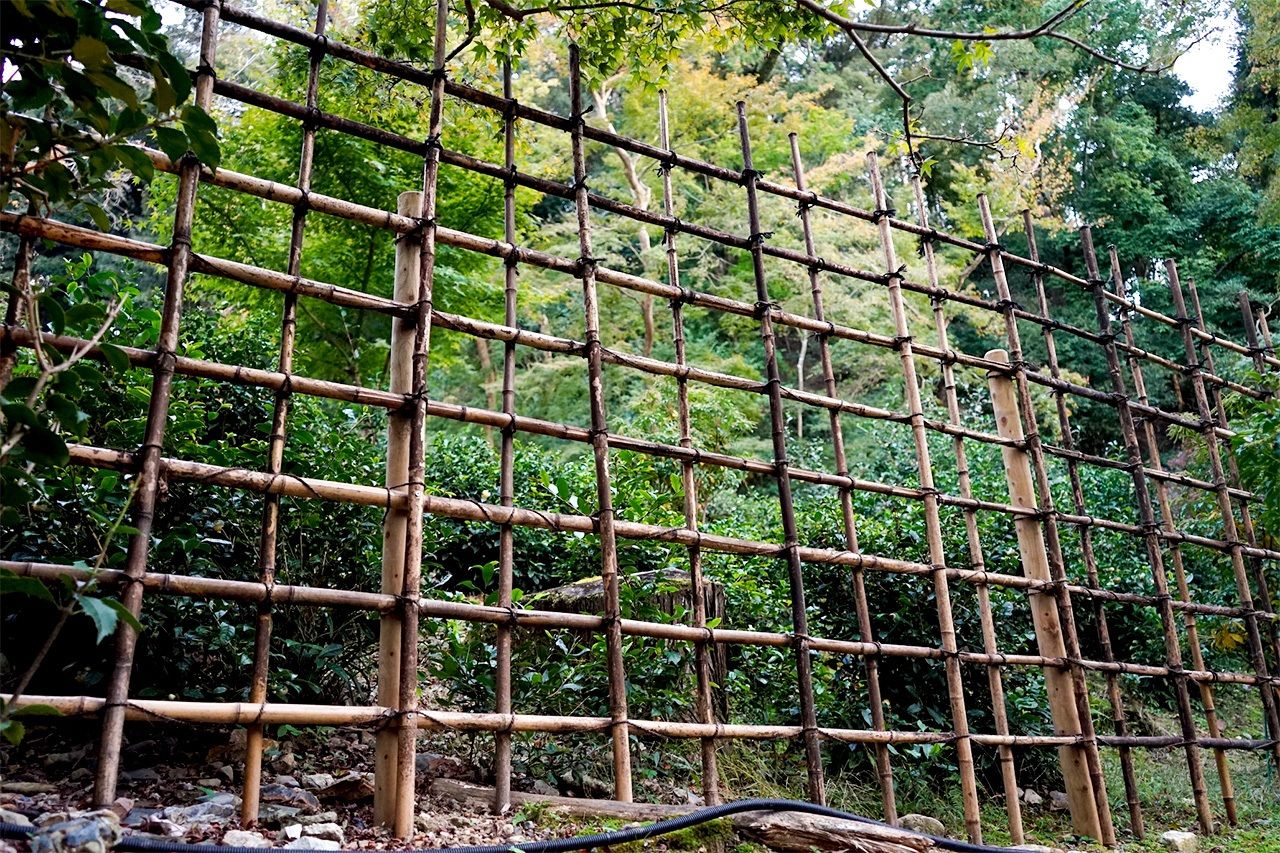
The ancient tea bush standing atop a rock wall along Kotosaka. (© Ukita Yasuyuki)
Matsubayashi contacted Ōgushi Takuji, head of the Tea Industry Research Division of the Kyoto Prefectural Agriculture, Forestry, and Fisheries Technology Center, to introduce Isozaki. Ōgushi asked the Kyoto Prefectural University to perform DNA analysis on the temple’s tea plants, and the results were that the tea bushes remaining at Kōshōji were most likely native varieties—rather than more common improved cultivars—and all samples collected belonged to the group of native Kyoto varieties.
The fact that these bushes were native Kyoto varieties may well imply that these were linked to the tea that Eisai shared with Myōe, which would be like a dream come true for tea lovers. The specialists are still hoping for documentation to reinforce their hopes that the tea plants on the temple grounds are the remnants of the Asahien farm, there is no doubt that these Kōshōji plants are a valuable genetic resource.
The Kōshōji hōjō—a room used by the head priest—holds a hanging scroll with a bird’s eye view painting of the temple by Mori Ippō, a painter active in the late nineteenth century. It shows that at that time, tea fields spread out around the temple gate and along the slope on the temple’s easter side. If at some time documents are found with written descriptions of Asahien’s location, it would strengthen the chances that this location could be officially recognized as the site of that historic farm.
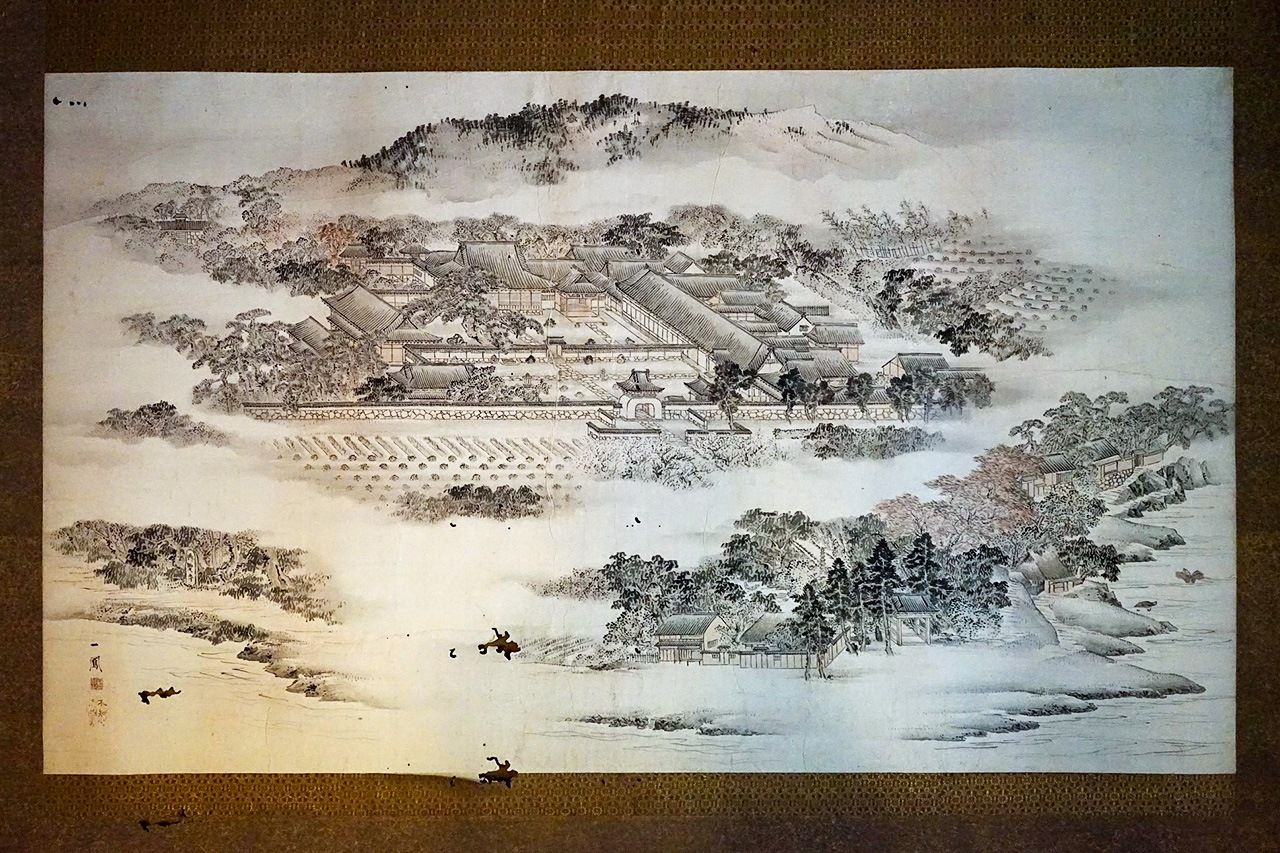
The hanging scroll by painter Mori Ippō. (© Ukita Yasuyuki)
The Value of a Native Variety
In the summer of 2021, Ōgushi guided Isozaki and Matsubayashi in growing sprouts from cuttings. Then, in the spring of 2022, they planted seeds taken in the fall of the same year and tried their hand at germinating seeds and growing true seedlings.
Today, most commercially grown tea plants are what is known as “improved cultivars,” or simply cultivars, which are propagated through cuttings, meaning clones. These stand in contrast to the so-called “native varieties” that have grown in this soil since ancient times.
Native-variety plants are difficult to manage in the field, and their foliage production varies, so many farmers have come to rely on the more consistent cultivars. Germinating seedlings is a challenge because it has a lower success rate than propagation through cuttings, but people believe that a successful seedling can produce more robust, longer-lived plants. These ideas of “native varieties” and “seedlings” are as romantic in the tea world as “endemic varieties’” and “autochthonous grapes” are in the wine world.
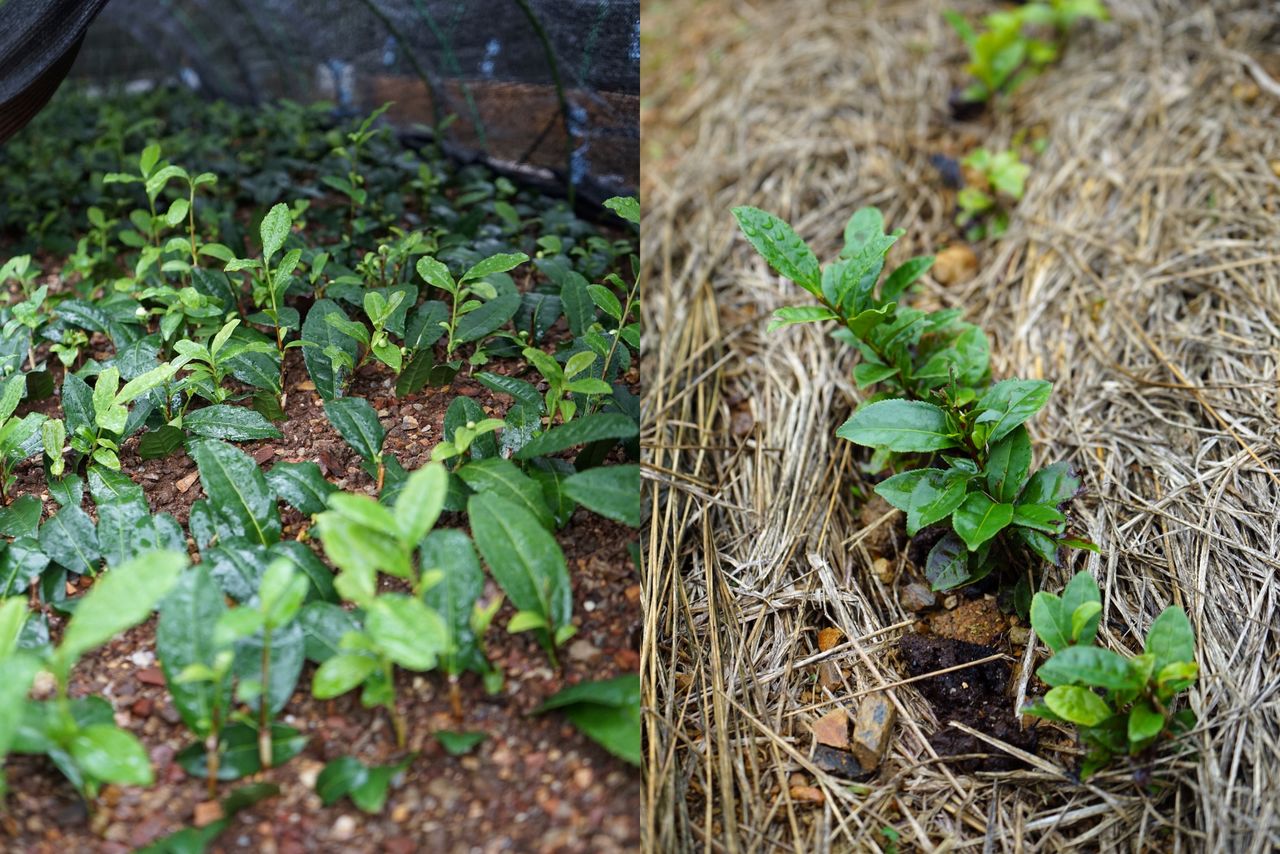
On the left are tea plants propagated through cuttings, while on the right are those from seedlings. The latter are supposedly longer-lived. (© Ukita Yasuyuki)
Isozaki has this to say about future developments: “I want people to learn about Zen through tea, and through Zen about the mountains, and so become closer to nature. We want to put tea at the center of all of that together. I hope that people can come to appreciate the Zen concepts of furyū monji (beyond words or letters) and kotan jakujō (elegant simplicity and tranquility) through growing tea plants, making tea, drinking it, and sharing it with others.”
A Famous Tea Surviving in Hiding
As to the all-important flavor of the tea, Matsubayashi has used the tea leaves from Kōshōji to make oolong tea, black tea, and roasted kamairi-cha. He says, “It is tea with firm body and sweetness.” I made a special request to Matsubayashi for a taste of his priceless oolong.
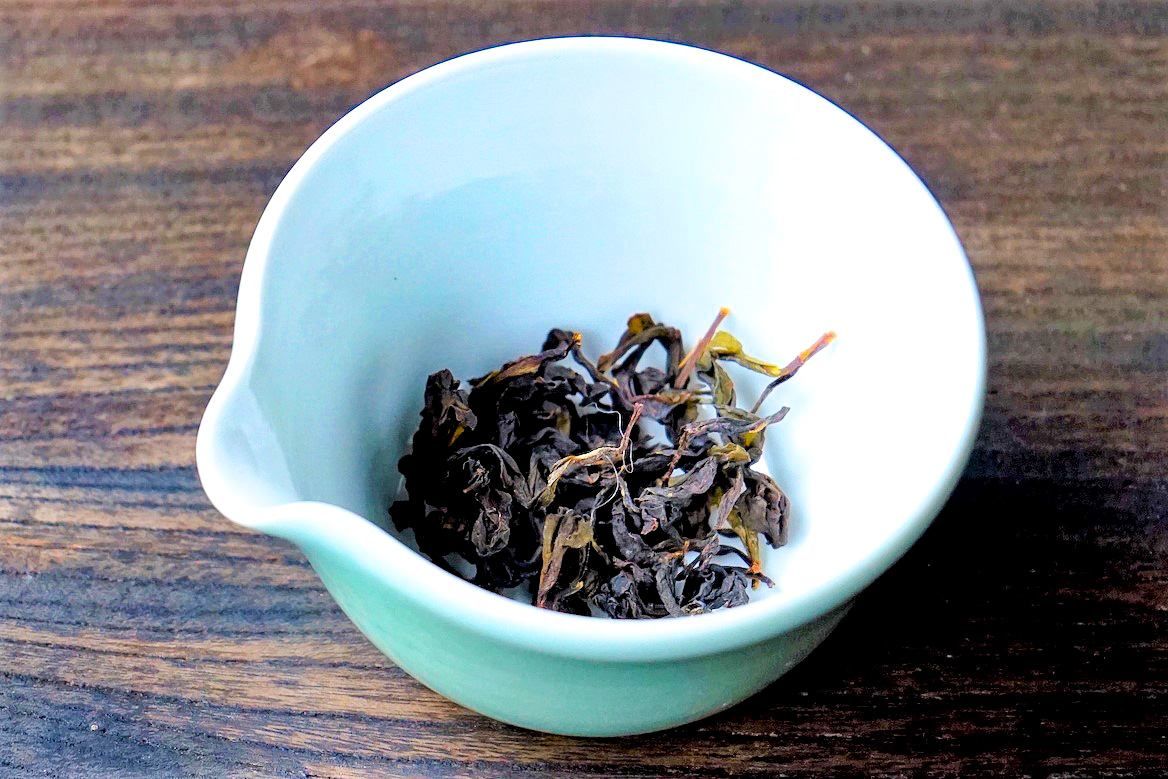
Oolong tea made from the leaves of Kōshōji’s plants. (© Ukita Yasuyuki)
Our venue was a large study connected to the Hattō lecture hall. Guests included two of Matsubayashi’s acquaintances with fascinating roles in the Uji tea world—Tsūen Yusuke, the twenty-fourth-generation head of the Tsūen tea house, and Yamamoto Jinjirō, the sixth-generation head of a tea shop bearing his name.
Tsūen was also head of the Kyoto Tea Association Youth Wing. He has already taken the lead in offering native varieties of tea at his shop, sensing their potential as field blends. Yamamoto is taking on his own challenges, including using the nearly extinct cultivation method known as honzu saibai, which uses thick reed screens to shield tea leaves from the sun when growing tea for matcha (instead of more commonly available vinyl black sheets), and the pursuit of single-origin tea sourced in varieties from single fields.
I asked these three men to discuss their thoughts on this attempt to revive Asahien as we enjoyed our tea.
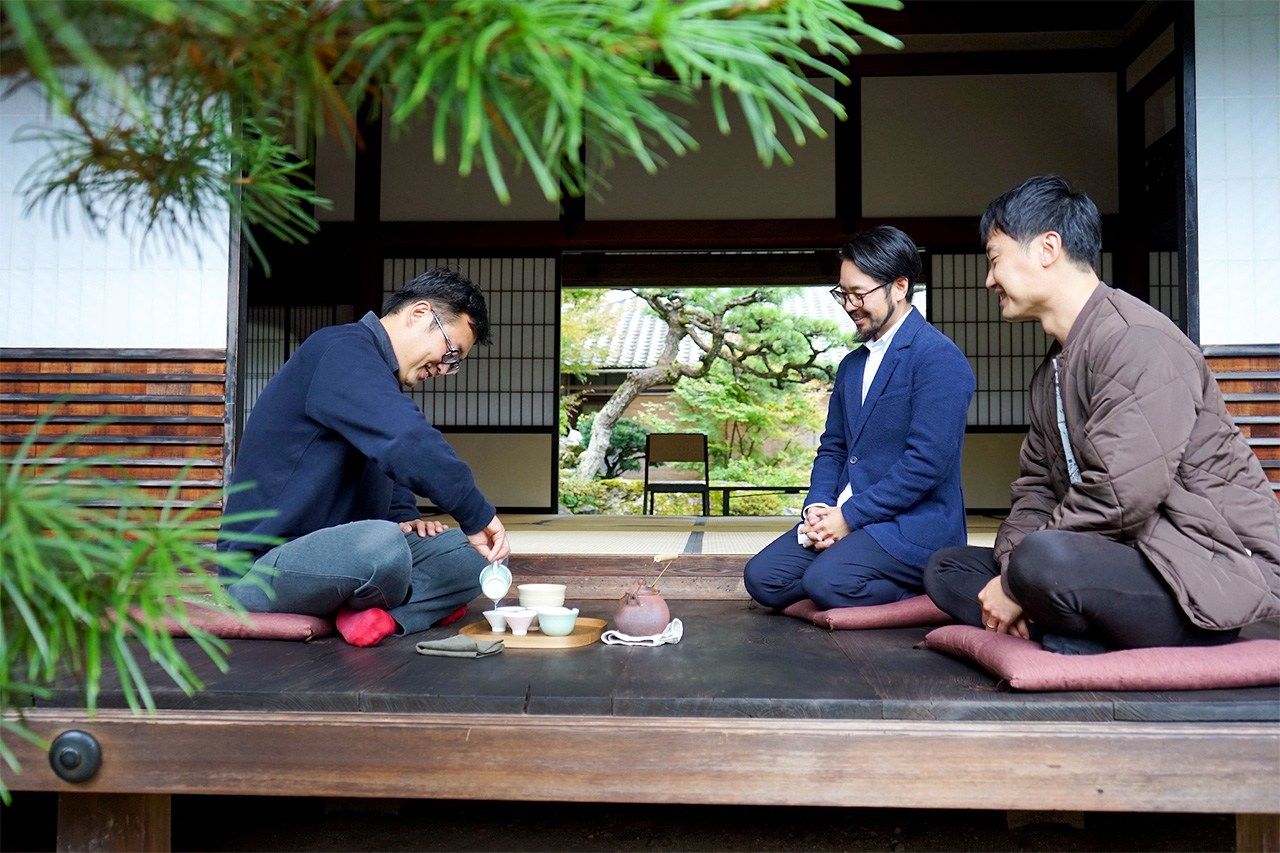
From left: Matsubayashi Toshiyuki, Tsūen Yusuke, and Yamamoto Jinjirō. (© Ukita Yasuyuki)
Matsubayashi notes, “We burned sugi cryptomeria needles in the hearth here to dry the leaves, and I think the smokey aroma of that lingers.”
Adds Yamamoto, “It’s a gentle flavor.”
Tsūen had this to say: “If we could revive another one of the Shichi Meien fields, I would be happy. It would be fascinating. It’s wonderful that anyone can buy and drink the tea from Okunoyama, but here I get the wholly different idea of using this tea at this place of ascetic Zen practice.”
“I think it’s good to have all different kinds of inroads for people to know more about the deep world of tea,” adds Matsubayashi. “If all we have are matcha-flavored sweets, people won’t take that next step. With this ancient temple and these precious tea plants, we can extend the story from there and people can go further.”
Yamamoto says, “I understand the temple itself had a tea factory on the premises before the war. I’m really curious about what kind of tea a Zen temple made and what processes they used.”
“The DNA analysis said this is highly likely to be native,” says Tsūen. “If it is, then the plant itself must be incredibly old, and that proves just how well tended the fields must have been in the past. About forty years ago, the yabukita cultivar got very popular, and while that did stabilize quality, it made for very homogenous tea. Native varieties are all individually unique, so harvest timing is difficult, and quality is hit or miss. But that’s what makes it so interesting. Someone once said native varieties are ‘God’s blend’ and I think that is exactly right.”
“It would be nice if people became more curious about native varieties because of the Kōshōji tea plants,” says Yamamoto to finish.
The dye made from cape jasmine seeds as a reddish-yellow color called in Japanese iwanu , which can also mean “not speaking,” and that is precisely the color of the oolong tea made from Kōshōji’s native leaves. Brewed into oolong tea with boiled water from the temple well created an eloquent argument expressing, in a way indeed going “beyond words,” the potential for the hopes of reviving Asahien to become a new tool for demonstrating the pleasures of Uji tea.
The group plans to move 1,000 seedlings currently under its care to the slopes behind the temple.
(Originally published in Japanese. Banner photo: Matsubayashi Toshiyuki, at left, and Isozaki Endai speaking in front of tea seedlings planted on the hillside of the temple Kōshōji grounds. All photos © Ukita Yasuyuki.)